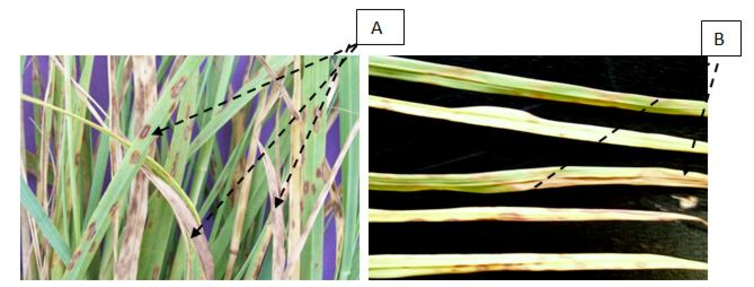Understanding blight in buffel grass
Buffel grass (Cenchrus ciliaris L) is a productive tussock grass that is adapted to deep, well drained loam and clay soils. It is very quick to respond to rain and is one of the most drought tolerant introduced grass species resulting in extensive use in improved pastures across northern Australia.
While buffel grass is very hardy, a leaf blight, caused by the fungus Pyricularia grisea, can affect the health of the plant.
In this article:
History of blight northern Australia
Symptoms of blight on buffel grass
Impact on industry and environment
Blight in time
First identified in the 1990’s in Queensland, Australia, this disease manifests through symptoms resembling “blast-like” lesions on the leaves. These symptoms are similar to those found on buffel grass in other countries such as United States and Mexico where this fungus has caused widespread damage. This pathogen has raised concerns for the health of buffel grass pastures, especially as it might have contributed to the phenomenon known as ‘buffel dieback or ill-thrift’, in the late 1990’s.
In November 2023, representatives from the Department of Primary Industries (DPI) identified blight in Cloncurry buffel grass in areas north of Hughenden and Richmond. By April the following year, several landholders reached out to DPI about an ill thrift in buffel grass pastures, described as poor growth response despite the wet season. DPI representatives confirmed the presence of blight affecting buffel pastures along the Lynd from Hughenden and the Croydon Highway from Richmond.
During further fieldwork north of Cloncurry in February of 2025, DPI staff observed early signs of the blight on buffel grass stands.
Harriet Dunne, DPI Beef Extension Officer in Cloncurry, provided the following insights:
“We’re observing ill thrift, yellowing of the plants, and blight lesions. Overall, affected buffel grass plants generally appear less productive.”
“We’ll continue to monitor the situation as the year progresses.”
“There might not be much that can be done for these more susceptible species right now. While short bursts of grazing pressure followed by rest early in the growing season could help reduce the amount of disease spores, more research needs to be done to confirm its effectiveness and find other management methods” Harriet said.
Symptoms of blight on buffel grass
Infected buffel grass typically shows signs of blast like lesions (elliptical shaped brown spots) on affected leaves.
As the disease progresses leaves turn yellow and eventually die off.
The disease also causes wilting and necrosis (tissue death) on affected plants. These visual signs may spread rapidly, especially in favourable environmental conditions.
The damage to buffel grass due to blight can significantly reduce the plant’s ability to photosynthesize, weakening it and making it more susceptible to other stressors, such as drought or grazing. This can lead to a decrease in pasture quality, palatability and productivity.

A –Blight leaf spot on buffel grass
B – Blight leaf streak/spot on buffel grass
Causes and spread of blight
Blight thrives in environments with high humidity and warm temperatures. Soil conditions that retain moisture, combined with wet or humid weather, create an ideal habitat for the fungus to develop and spread. Poor drainage in pastures also promotes the growth of the pathogen.
The disease spreads through fungal spores that can be carried by wind, rain, or contaminated soil. The spores can also spread through infected plant material, which further contributes to the disease’s rapid transmission.
Impact on industry and environment
Buffel grass is an important forage species for livestock and serves as a staple in many pastures. The spread of blight can lead to economic losses as affected pastures suffer from reduced productivity. This can have follow-on effects on livestock health, and profitability especially where buffel grass occurs as a monoculture.
In addition to its agricultural impact, blight may also affect the ecosystems where buffel grass is integral. Although buffel is an introduced species, it has become naturalised in Australia and a decline would alter habitats, particularly in arid and semi-arid regions where this grass is essential for soil stabilisation.
Management and control
Sowing buffel grass varieties that are resistant to blight is likely to be the only effective long-term solution to mitigate this disease.
Of the commonly sown buffel grass varieties, Biloela has observed to be more tolerant than Gayndah and American but all are susceptible. Some older varieties such as Bella, Lawes, Molopo and Viva are resistant however there’s currently no commercial seed supply of these. A recently developed variety called Lakota also has resistance to this disease but seed is not commercially available at this time (April, 2025).